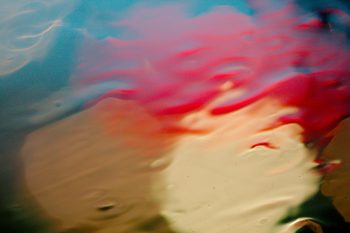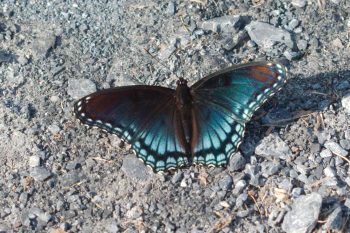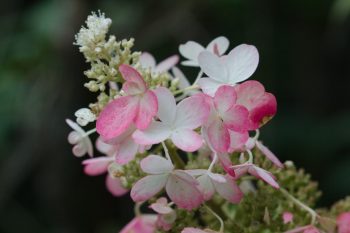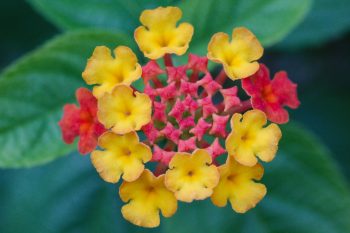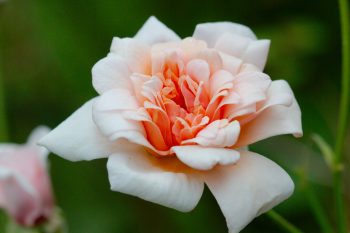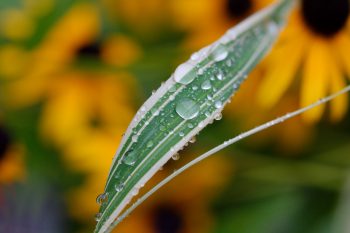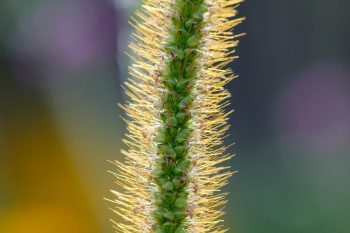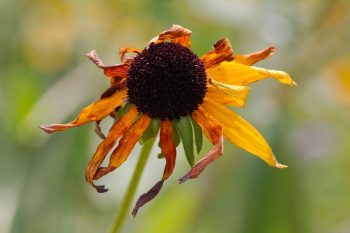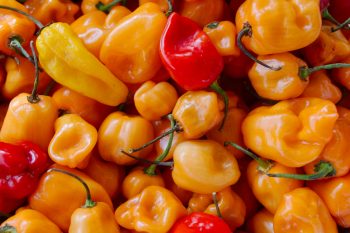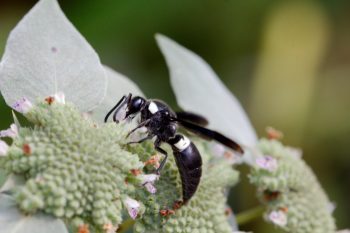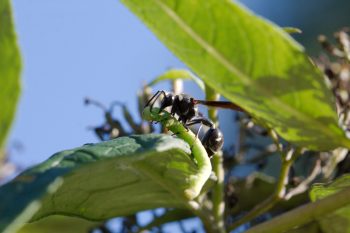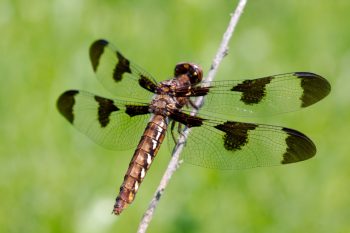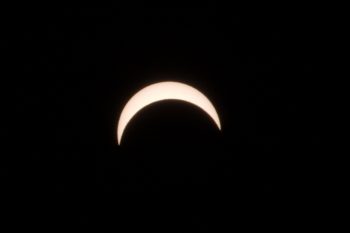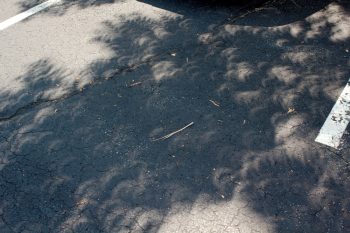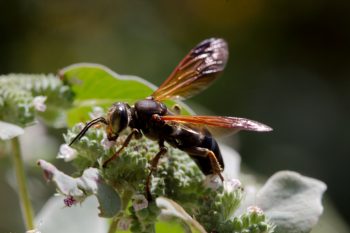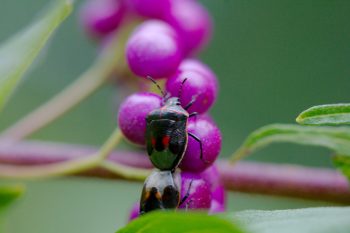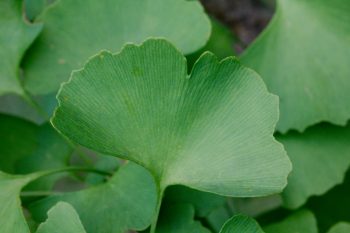I met the guys for dinner at Matchbox this evening and was a little early. It was raining quite hard as I drove there and I sat in the car a little while waiting for it to let up before heading in. The store lights across the street were lighting up the water splashing on and flowing down the windscreen of my car and I enjoyed watching the patterns it made. I have no idea, at this point, what the signs say and you certainly can’t tell from the picture, although at the time I remember wondering if I’d be able to read them in the pictures. By the time we were done with dinner the rain had basically stopped and I took a few pictures of the gas fire in the pit outside the restaurant entrance. But fire pictures are easier to come by. It doesn’t often rain as hard as it did this evening.
Elsie and Marit
We went with Cathy’s mom to the Fourth Presbyterian picnic today at Rocklands Farm. We haven’t gone to Fourth for over 25 years but we still know a lot of people there and of course we know the Rocklands folks, so we had a wonderful time visiting with old friends. I took a bunch of pictures but I have to admit I took more of Janis and Greg’s grandchildren than all the other pictures combined. They’re all just so darned cute. Here are two cousins, Elsie on the left and Marit on the right, ‘driving’ the gator (actually it’s a Kubota, but their previous one was a John Deere and the name is a holdover from that). These two are clearly chums and I’m really happy that Marit and her family are back in the USA for the foreseeable future. Anyway, this picture makes me happy.
Limenitis arthemis astyanax (Red-spotted Purple)
I went for a hike with a friend and his four lovely kids today. It was an absolutely gorgeous day and a perfect day to get a little bit lost. We were never really truly lost but we did miss a turn and ended up further from the car than we had originally planned. We enjoyed the woods and the kids in particular enjoyed kicking over mushrooms (after letting me get down on the ground to get a few pictures first). We also saw a slug and I got some nice pictures of that, if pictures of a slug can ever really be considered nice. This picture is a red-spotted purple (Limenitis arthemis astyanax), one of four subspecies of Limenitis arthemis. This is a very distinctive butterfly and quite a pretty thing. Yes, I know that it looks more blue than purple. It’s been mentioned. The ‘red’ spots (which are orange. I know, right?) are on the lower hind wings (i.e., the other side).
Kai
We babysat Kai for a few hours today and naturally I took a few pictures. Actually, he slept or was mostly quiet in his crib for most of the time we had him. He didn’t fall asleep for about 20 minutes but was actually not very fussy during that time. After he woke up again we played with him a little and that’s when I took pictures. He was less happy for most of that time than he had been when left alone in his crib. Cathy had him somewhat interested in a few books but the pictures I took were not of a happy boy.
Then his mom came to the door. That’s when I snapped this one. Yes, the happy view we present on social media is often that one moment of joy in an otherwise bleak, joyless day (his, not ours, we were happy just to be in the same room as this beautiful little boy, even when he was sleeping). Enjoy this picture for what it is, a joyous smile on a cute little fellow. But don’t be taken in by the visions of perfection you see on Facebook, Instagram, and other such sites. They are often not a reflection of reality.
Hydrangea
This hydrangea has taken a few years to get established. Last year it was eaten back by the deer, which didn’t do it a whole lot of good. We’ve managed to protect it (or have simply been lucky) this year and it’s doing much better. We planted it and another, blue hydrangea a few years ago but the other didn’t make it. This seems happy and the flowers, white and pink, are quite nice against the green of our back border. We’ll need to do a little pruning to keep the forsythia from covering it up, but I think it’s well on its way to being a favorite late summer bloomer.
Lantana
Lantana is a genus of about 150 species. The mostly commonly grown species is Lantana camara, a tender, woody shrub native to tropical regions of Central and South America. It has become an invasive weed in many parts of the world but here, where winter temperatures are too cold for it, there’s no chance of any real problem and it is grown as an annual. It is toxic to livestock but it does not appear to be toxic to humans (although I don’t think I’ll be doing any experiments on that). The flowers are quite beautiful, changing colors as they progress from bud to open flower, leading to some wonderful color combinations. This one is sitting on our driveway and is quite happily brightening up the place with its yellow and pink blooms.
Rose ‘Perle d’Or’
I don’t think I’ve posted a picture of this rose yet this year. It’s such a reliable little rose and I’m really happy that I got one to plant just outside our front door. The flowers are small but quite beautiful, with a delightful fragrance. It had a tough time the last few winters. This last was relatively mild overall but there was a week when temperatures were below zero fahrenheit and that’s tough on plants that otherwise do well in our zone 6a climate. It’s bounced back pretty well and has had a few flowers on it pretty much non-stop all summer and should continue until the first frost. What’s not to love.
Water On A Leaf
I know that the title for this post is a little unimaginative. That’s sort of me, though. Generally straightforward and simple (mostly simple). I went out to take pictures of reflections of black-eyed Susan flowers in the water in our back yard birdbath. I got some that were reasonably nice but nothing I was excited about. I also took a handful of pictures of this leaf of grass, an ornamental grass growing in a container on the corner of the patio. I love water droplets on pretty much anything and I’m pretty happy with this picture. I hope you enjoy it, too.
Grass Seeds
Generally we don’t let our grass get quite this tall. This isn’t in the lawn, though, it’s growing in the midst of the black-eyed Susans and Verbena bonariensis in the back garden. There are a few places where grass gets itself and it’s hard to keep up with. This is one of them, not least because mowing right up against the garden is made more difficult by the flowering plants leaning out into the lawn. We don’t want to cut any more of them than is absolutely necessary. But maybe we’ve let it go a little too much. Anyway, I actually think this is quite beautiful, with the afternoon sun shining on the awns (the ‘hairs’ extending from each floret).
Black-eyed Susan
We have a lot of black-eyed Susans growing in our yard. Mostly in the back but they self-seed and are here and there throughout the yard. I suspect our neighbors are not overjoyed with them, but they aren’t as invasive as some things we have (<cough>goose-necked-loosestrife<cough>). I love having all that yellow-orange in the back yard from early July on and even as they start to fade, they are still beautiful. Most of them are not looking like this, although they will be before too long.
Habaneros
Mom sent me a text this morning (that by itself is pretty remarkable) asking if I wanted to go to Eastern Market with her. She was looking for local figs, particularly brown turkey figs, and heard that there might be some down there. We did find a farmer’s stall that had about 2.5 pounds of them. She bought those. We were also able to buy about six pounds of black mission figs. They are sweeter but for making preserves, that isn’t really necessary. Their flavor isn’t all that different, though, so I suspect they will be quite good enough. While mom was buying her figs, I took some pictures of peppers. These are habaneros and I sort of think this might make a nice jigsaw puzzle. That’s something I’ve been meaning to do for a while.
As an acquaintance of ours once said, after biting into a pepper thinking it was a green bean, “Wow, that’s hot!”
Round Trip to Boston
I made a round trip to Boston today, taking Dorothy to school. She’s keeping the car with her but understandably didn’t want to do that long drive by herself. So I went with her and then flew home late in the evening. The drive itself was relatively uneventful. We were on the road by 6:30 and crossed the Delaware Memorial Bridge before 8:30. Traffic was slow getting onto the George Washington Bridge as I suspect it is except for in the middle of the night (and possibly even then). Traffic remained heavy across the upper part of Manhattan Island and then off and on through the Bronx and most of the way across southern Connecticut, especially around New Haven and New London. We stopped for a long lunch in Mystic, just before getting to Rhode Island. Arriving in Boston after 4:00 PM on Friday, it was no surprise that we got into very slow traffic in the parking lots that pass for tunnels but we needed to get to Logan Airport and there are only so many ways to get there. My flight wasn’t until just before 9:00 PM, so we were not really in any rush.
Dorothy continued on to school from there and I got home without incident. That is, unless you count the mouse that was running around the departure lounge. I didn’t know about it until a lady screamed and jumped up onto the chairs.
Monobia quadridens (Four-toothed Mason Wasp)
I went out back today after work and found this little wasp on the mountain mint. I was only able to get a few half decent pictures of it before it flew off but they are good enough that I’m pretty sure it is a four-toothed mason wasp (Monobia quadridens). Like the potter wasp in yesterday’s picture, the nests of the four-toothed mason wasp are provisioned with caterpillars. The cells of nests are separated by mud partitions, which is why they are called masons. At least I think that’s why. Maybe they are members of the fraternal organization of a similar name.
Eumenes fraternus (Potter Wasp)
I went out into the back yard this evening to see what I could find. There was a serious buzz around the flowers with dozens (or possibly hundreds, I really don’t know) of bees, wasps, skippers, and flies all moving about. After getting a few pictures of a wasp on the mountain mint, most of which are pretty blurry, I went to see what was happening at the buddleia near the gate. This potter wasp (Eumenes fraternus) flew up to the top branches but I could see it was carrying something. Turns out it has a caterpillar. The female potter wasp lays eggs in a mud nest and then provisions it with small caterpillars, as food for the larva.
Plathemis lydia (Common Whitetail)
I went outside a little before 1:00 PM today and it was quite warm and very muggy. I took a few pictures of wildflowers but it looked like I was not going to get any insect pictures. There were plenty about but they were all moving quite a lot, which makes it hard. I also didn’t feel like hanging out in the hot sun any longer than necessary. As I was leaving, this female common whitetail (Plathemis lydia) landed on the ragweed just ahead of me. I got a few pictures from where I was and then very slowly moved closer until I was able to get this one and a few like it before she flew away.
Solar Eclipse
In case you’ve been living in a cave for the last month or so, there was a total solar eclipse across the middle of the lower 48 states today. The area of totality was far enough south of us that I didn’t feel any great need to visit Dana or Alan, cousins in Nashville, TN and Columbia, SC respectively. We would have something to watch here, even if it wasn’t as spectacular as what they’d get. I made two pinhole cameras, one to leave with Dorothy and the other to take with me to work. Cathy and I went out and watched with a lot of other folk from work, some with eclipse glasses, others with their own pinhole box cameras, and some looking at the image in my box, which was rigged up on the ground and was easily viewed. That made it easy to track the progress of the eclipse.
The first image here was taken at 2:38, about four minutes before it reached its maximum obscuration of just over 80%. There were clouds moving past for the next six or seven minutes, so this was the best I got. I know it isn’t anywhere near as good as what some folks will get, but I’m pretty pleased with it.
The second picture is the shade thrown by a walnut tree by the side of the parking lot. As you can see, each place where light comes through the leaves acts like a pinhole camera, projecting a crescent image on the ground.
Wasp
I don’t know what sort of wasp this is and I’m sort of doubtful that I could identify it from this or the two other photos I took of it as it moved around the mountain mint (Pycnanthemum muticum) this afternoon. It was a sort of lazy afternoon and I hung out with the wasps again, as I tend to do. If I’m going to be out on a day above 90°F, especially if I’m going to be in the sun on such a day, there’s a good chance it’s because I’m hanging with my insect friends. Otherwise, I head for the shade at the very least, if not for the air-conditioned indoors.
Duskywing
This little, dark butterfly was flitting about the black-eyed Susans this afternoon. It’s been quite warm and today was especially so, but the hot sun seems to be exactly what the little flying critters love. The mountain mint (Pycnanthemum muticum), the black-eyed Susans, (Rudbekia species), the tall verbena (Verbena bonariensis), the butterfly weed (Asclepias tuberosa), and what’s left of the coneflower (Echinacea purpurea) were all thick with bees, wasps, flies, skippers, and butterflies. It was nice just to be there with them, hearing the faint buzz and seeing all the movement. This little fellow, one of the spread-wing skippers, took a little stalking to get pictures, but I think it was worth the effort. UPDATE: This has been identified as a wild indigo duskywing (Erynnis baptisiae).
Cosmopepla lintneriana (Twice-stabbed Stink Bug)
I came across another new bug today (new to me, that is). This is the twice-stabbed stink bug (Cosmopepla lintneriana), so called because of the two red ‘wounds’ the apex of the scutellum. There were at least three of them on the American beautyberry (Callicarpa americana) in our back garden, including the two shown here. I had a hard time photographing them because they kept crawling around to the underside of the branches and under the bunches of purple berries. My camera, with a 100mm macro lens and two off camera flashes is a little unwieldy and takes two hands to manage properly. So, I’d use one hand to scare the bugs onto the upper side of the branch and then let go to get the picture. By the time I had found them again through the viewfinder and focused on them, they were half way back to the underside of the branch.
Ginkgo biloba Leaf
From the Missouri Botanical Garden:
Ginkgo biloba is a deciduous conifer (a true gymnosperm) that matures to 100′ tall. It is the only surviving member of a group of ancient plants believed to have inhabited the earth up to 150 million years ago. It features distinctive two-lobed, somewhat leathery, fan-shaped, rich green leaves with diverging (almost parallel) veins. Leaves turn bright yellow in fall. Ginkgo trees are commonly called maidenhair trees in reference to the resemblance of their fan-shaped leaves to maidenhair fern leaflets (pinnae). Ginkgos are dioecious (separate male and female trees). Nurseries typically sell only male trees (fruitless), because female trees produce seeds encased in fleshy, fruit-like coverings which, at maturity in autumn, are messy and emit a noxious, foul odor upon falling to the ground and splitting open.
This one is in my mom’s front yard. It’s a tree that dad planted many years ago but which has grown very slowly. It appears to finally be starting to grow taller.

